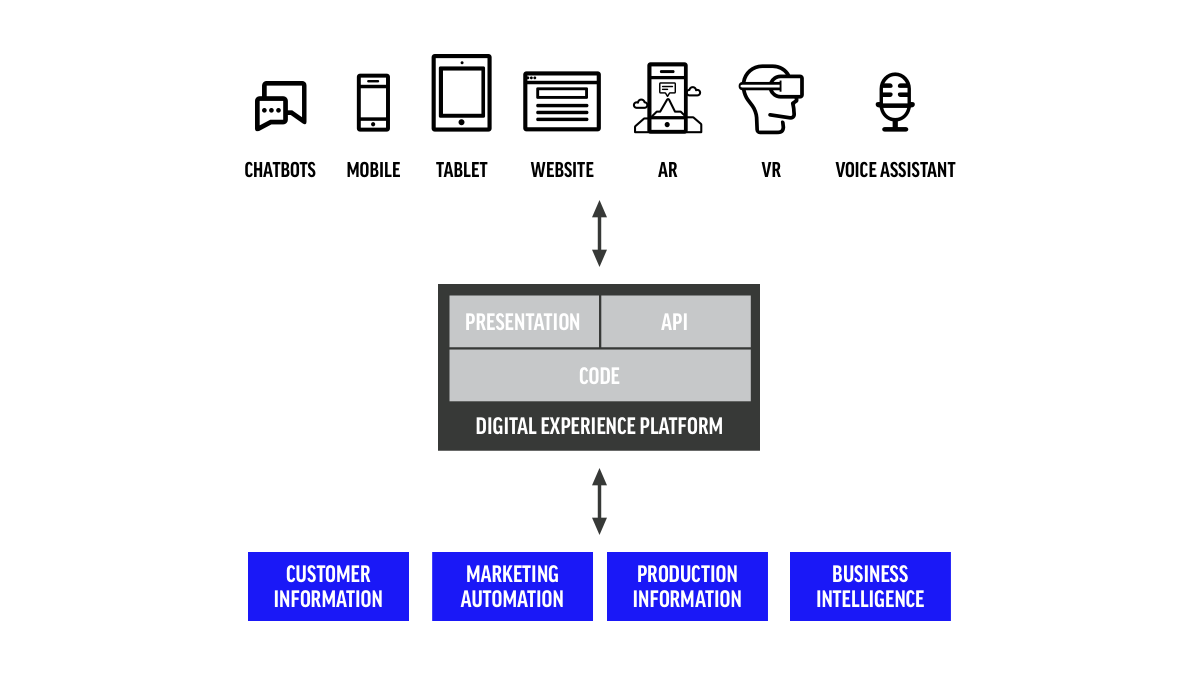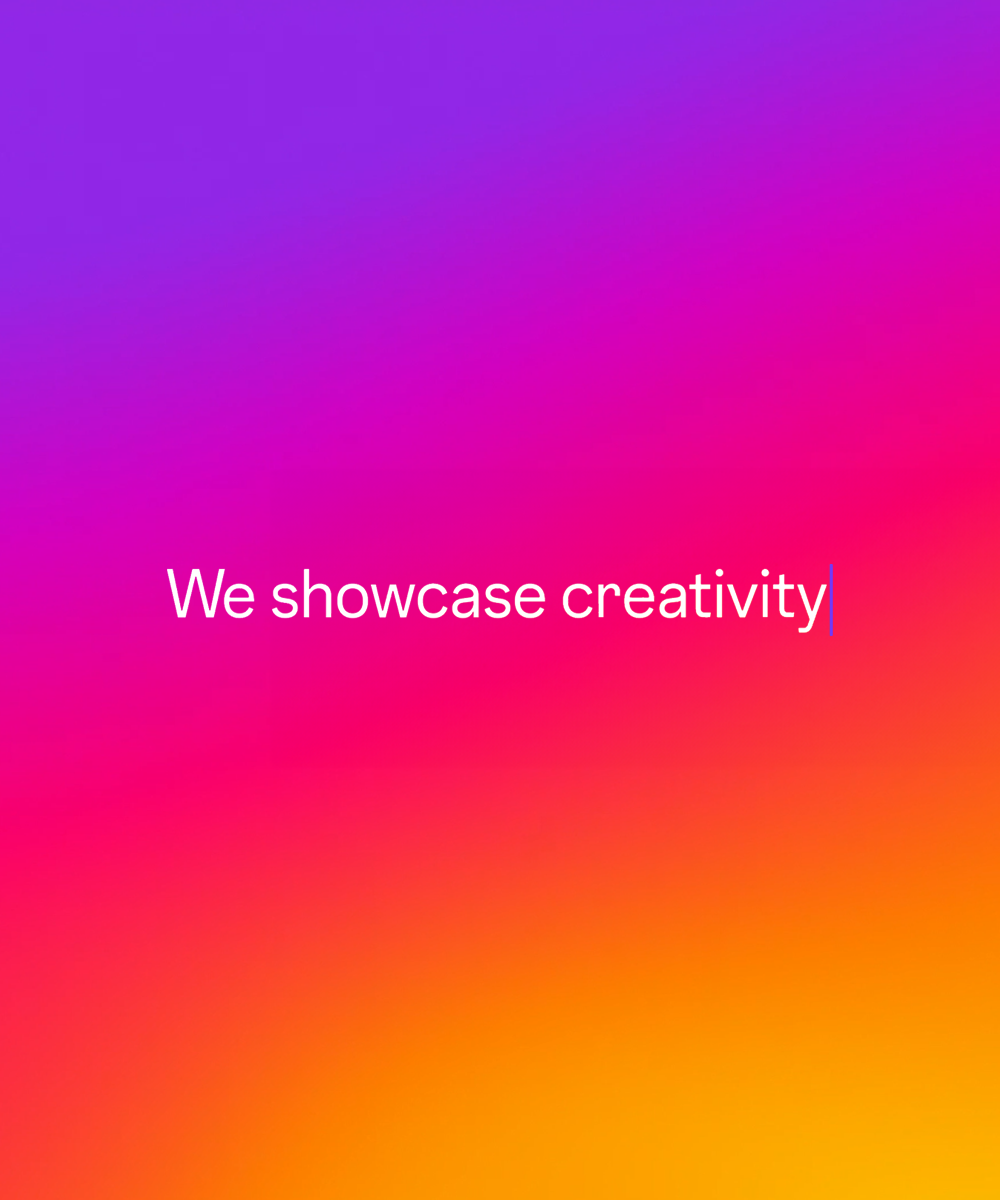According to research and consulting firm Gartner, a Digital Experience Platform (DXP) is ‘an integrated software framework for engaging a broad array of audiences across a broad array of digital touchpoints. Organisations use DXPs to build, deploy and continually improve websites, portals, mobile apps and other digital experiences.’ In other words: the DXP makes it possible to make the customer’s digital experience come true. It is the next step in the digital evolution.
As a digital agency, we would always create websites using a CMS and if a customer wanted multiple websites, we would set up another CMS and continue to build. Later we adopted a more intelligent approach, by having multiple sites run on one CMS. This yielded practical advantages, such as comprehensive personalisation and the option of spreading out a marketing campaign across various websites. And, as the term ‘evolution’ indicates, we became increasingly good at it.
The next step in that evolution was the Web Experience Platform (WXP) for transactional or otherwise integrated websites. The big advantage of a WXP is that it can ‘feed’ multiple sites, but it does add complexity to IT.
We’ve now come to a stage where communication between companies and customers also takes place through mobile apps and other devices. We have chatbots, UI-less and voice-controlled home assistants such as Google Home and Alexa. We’ll just have to wait and see what AI and VR will bring us in the (near) future. There are all sorts of new ways to communicate with customers. The consequence of this is that we have to also maintain all of these digital experiences. And that’s where DXP comes in.
One hub for all your digital touchpoints
DXP’s great strength is that it is a central platform from which we can send data to all digital touchpoints. We can send content to it and provide unilateral access to user data. When someone wants to change a bank account number, for example, this can be done in precisely the same manner as a ‘my portal,’ and you can also log in to a website in the app. Even marketing and commerce can be accessed from that central platform. So the DXP makes it possible to send out and personalise omni-channel campaigns. It makes it possible to target customers immediately through various channels. If a customer has viewed a product offer somewhere online and opens the app later, the same advertisement can be displayed through the DXP.
The DXP not only makes it possible to send data to all the various channels, all the data also returns through that central point. With the help of machine learning we can automatically identify user segments in the background, thereby continuously optimising the marketing machine.
Future and innovation-proof
The DXP has another benefit as well. It can work seamlessly with existing systems and also offer support for innovations or new digital experiences. The name says it all: it is a digital experience platform, so it must allow us to quickly create new , solid digital experiences, which we can then use to be disruptive in the market. This also requires flexibility. Experience has shown us that internal IT teams don’t develop as fast as we do as an agency, but if we want to develop a DXP, we are dependent on those internal teams. That’s why it’s good to have fallback options within the platform.
Take the proof-of-concept of a new functionality, for example. We can develop this functionality in the protected environment of the DXP, keep working away until everything is working perfectly – much faster than is possible internally – and then ready the internal systems in parallel in order to ultimately hand it over. Sometimes we’re dealing with a company’s core systems, so you can’t just start stirring things up in there. It has to be integrated all at once in a stable manner.
Best of breed
Building a DXP from the ground up in one go is an option, but it is often also possible to make good headway with an existing platform. A company may already be using tools that work great. Those elements can easily be added to the DXP using APIs. The approach depends on what the customer already has in place and what the wishes are.

Everything connected
There has been an evolution in which we have completed many different projects from which we have learned many different lessons. Looking forward we can expect further technical development offering new opportunities. A DXP, containing a website with CMS, offers the possibilities to think further about marketing, personalisation, commerce, mobile apps and – a bit further in the future – chatbots, VR, AR and AI. It is a flexible platform, with room for rapid development and innovations. But depending on the project and the needs of the customer, we sometimes still use a CMS or WXP.
The digital experience platform is a must for companies that are at a point in their evolution where they benefit from a fully integrated experience. Companies with a stake in digital, who have a diverse target group that they want to reach through various touchpoints.
More Insights?
View all InsightsQuestions?
Integrations Director





